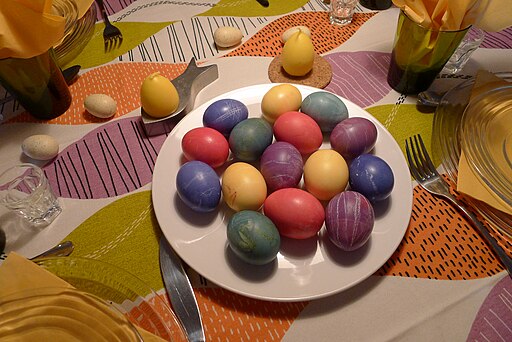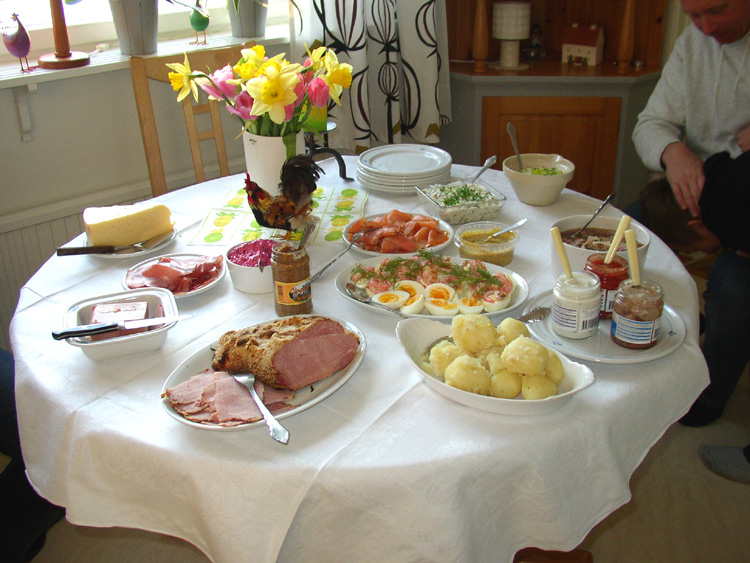Today we are going to continue exploring Easter Around the World. Today's stops will be Spain, Portugal and France. Now my first knowledge of Easter in Spain came when my grandparents toured Spain and Morocco at Easter time. They brought back for me a doll which was filled with candy. The doll I had in our doll collection, however it always made me feel uncomfortable, because if you do not know about the Easter celebrations in Spain, it looked like a member of the Ku Klux Klan. It did not help that the doll was wearing a red robe with a white headdress (so red where the picture above is white and white where it is blue or similar to the ones below without the black capes).
Now these marchers are called penitents. They represent feeling sorry for any bad acts. They often carry the cross or Jesus on the cross and find it a heavy burden to carry for their sins. In Spain, Holy Week is called Semana Santa. People drape black clothes from balconies and statues of Mary are dressed in black lace. As they are mourning the death of Jesus. There are parades like the one above and people dress up in clothes that were worn in Jesus' time. On Good Friday men take part in Los Tamborados. It is a ceremony where they beat drums to mourn the death of Jesus. Even when the drummer gets tired he does not stop. No candles are lit in the church on Good Friday or Holy Saturday. On Easter a special candle is lit in the churches to symbolize Christ's victory over death. Easter eggs and the Easter Bunny are not a big thing in Spain. For children too young to receive the First Communion, the dessert on Good Friday is mona. Mona is a large bun decorated with colorful eggs. Once a child receives their First Communion, they have more serious things to think of and no longer get the special mona.
Portugal has a very similar celebration as Spain. On Good Friday crowds gather in town wearing the white hoods as a sign to God they are sorry for their sins. They pray and carry torches. In some parades children carry floats that tell a story from the Bible. In the evening there are Easter fireworks to show light comes out of darkness. The new hope and new life are born. In Braga, there have a funeral procession for the Lord.
In parts of France there are similar Good Friday parades. In Sartène, a man in red robes and hood covering his face, called the Red Penitent, carries a cross through the streets (see picture above). He is followed by men in black robes chanting a hymn. This goes on until midnight. In Corsica the penitent repeats the suffering of Christ by carrying a heavy cross. Otherwise Easter or Pâques in French is very similar to Easter in the United States. Children who go to their first confession on Holy Saturday may bring eggs as a gift to the priest. La Semaine Sainte or Holy Week begins with Palm Sunday where people bring branches to church. The decorated branches can be from palm trees or many other types. Palm Sunday is also called Pâques Fleuries or Easter in bloom. In France the children are told that on the evening of Holy Thursday the church bells fly away to Rome. No bells are rung until Easter morning when the bells fly back. The bells drop chocolate bunnies, bells, and eggs for the children to find when they fly back. The chocolate is from the Pope who the bells visited. In some parts of France children look for little chariots of goodies. The Easter Bunny also makes an appearance by hiding little nests that the children make and leave out Saturday night. The children have a great time looking for all the treasures. A game children play in France is to throw raw eggs in the air. The first person to drop one loses the game.

That is our look at Easter in Spain, Portugal and France. I find the similarity of the hooded outfits so interesting. All of my information for this post came from the books shown above and from Euroclub Schools - Easter in France which has some great information about the holiday from a child's perspective. If you live in one of these countries and want to correct or add something about your celebration, please let me know!
For more Multicultural and Easter Posts check out:













































.svg.png)





